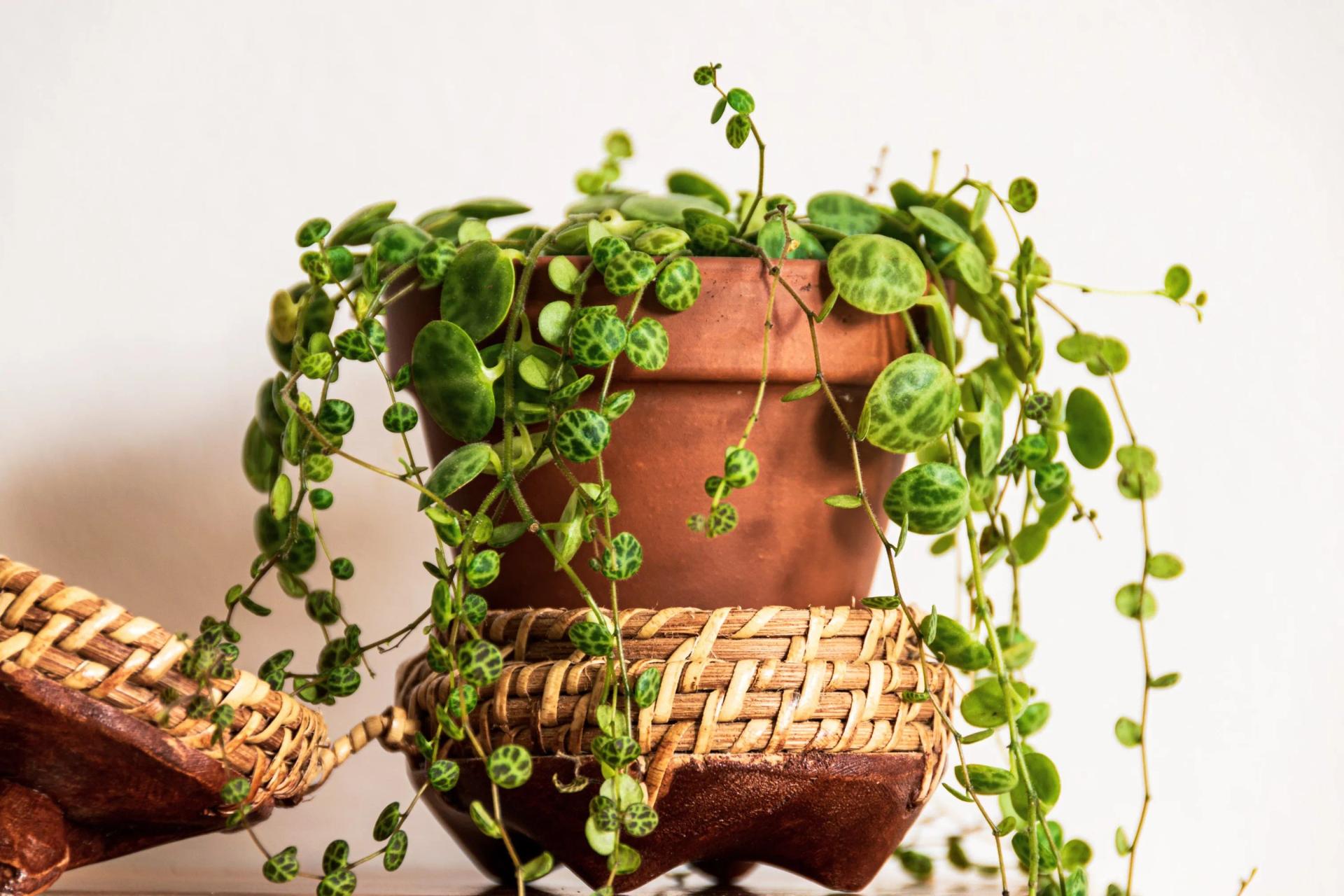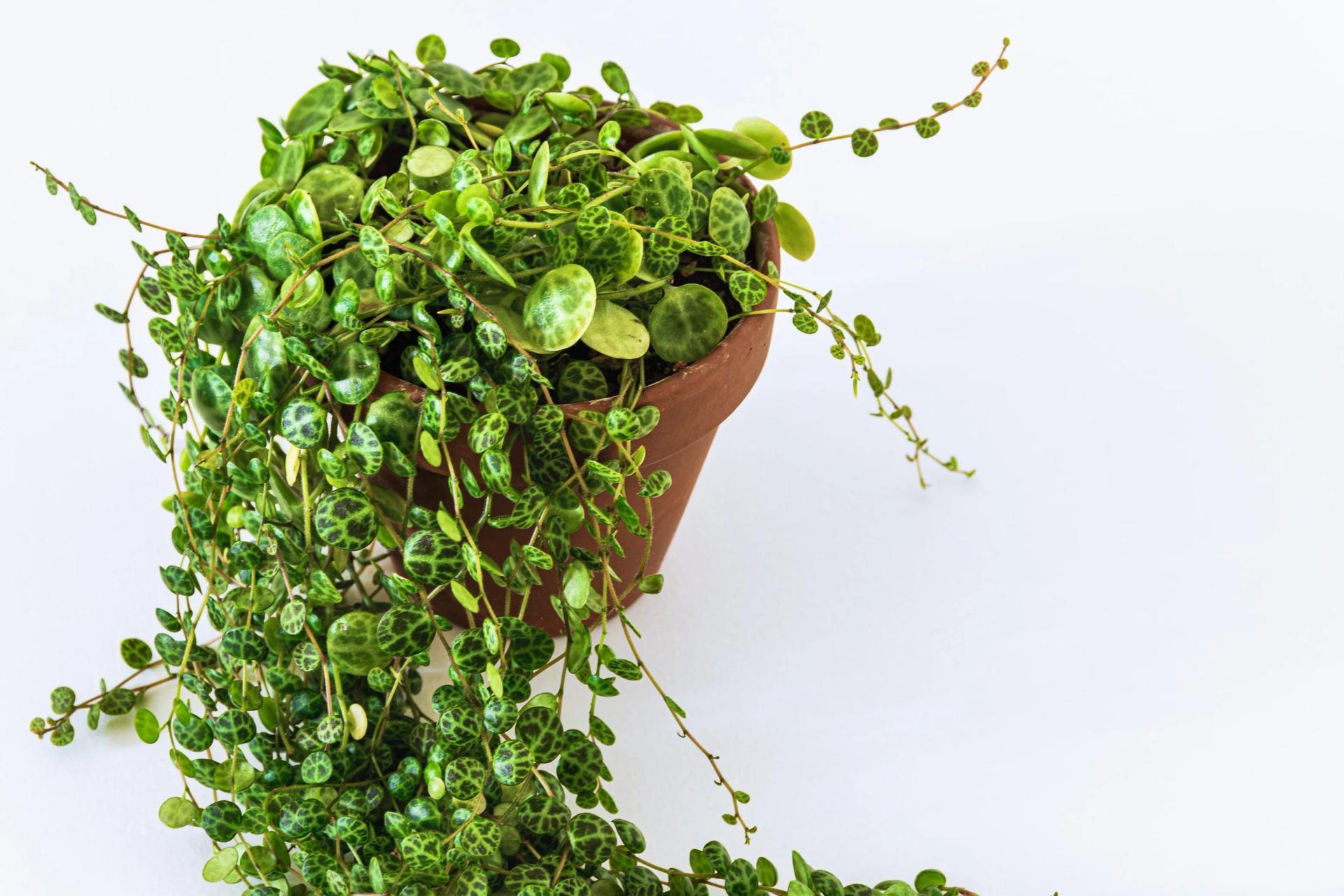What's easier to care for - a turtle or a succulent? Well, the stakes are too high, so we recommend you take a look at the cute Peperomia prostrata. Known as a String of Turtles plant, this small vining succulent with juicy leaves is perfect for hanging in baskets and admiring its gentle cascades. Just like most other succulents, this plant is not too finicky; you just have to watch out for a few maintenance aspects. Read on to learn how to care for a String of Turtles.
Overview
Peperomia plant originated in the rainforests of Brazil, where it apparently learned some good manners – due to its size and delicate leaves, it's not likely to shade out its neighbors. Despite its tropical ancestry, Peperomia is one of the easiest succulents to care for. It seems like this tiny plant is just out there to vibe and please our eyes, considering that its tortoise pattern has remained a fashion must-have during the past few years. It's in good relationships with other members of its genus as well as other succulents and tropical plants, so it can be easily combined with other green pets.

Watering
Peperomia care requires moderate watering. However, consider switching to misting the plant instead to mimic the humidity levels of its natural habitat. In addition, you may put the pot on a pebble tray or somewhere close to other tropical plants, but make sure they all get enough air. Make sure that the potting mix has good draining qualities.
Temperature
Most room temperatures within the range of 65-75˚F (18-24˚C) are perfectly fine for Peperomia. It can also tolerate slightly lower or higher temperatures, but temperature fluctuations, cold drafts, and direct sources of heat should be avoided.
Lighting
The String of Turtles succulent has become a beloved display on desks and shelves. While this is perfectly suitable, make sure the spot receives enough bright indirect light. Exposing the plant to direct sun rays will make its ornament fade out. These succulents also do well under grow lights.
Pests & Common Diseases
- The first thing to watch out for in the String of Turtles care routine are the signs of overwatering. This condition manifests itself with yellowing, softening, and drooping of the leaves and often leads to root rot. Don't let the soil get soggy, and allow it to dry in between the waterings.
- If you notice fuzzy white matter on the undersides of the leaves, this may be due to mealybug infestation, which thrive in an excessively moist environment. An alcohol solution in a 1:10 ratio is used to treat those.
- Alternatively, apply neem oil to deal with mealybugs, spider mites, or any other pests. The procedure should be repeated 2-3 times to get rid of the insects completely.
- It's normal for peperomia to drop some leaves, but if it does so in huge amounts, this might be due to irregular temperature exposure or cold stress. Both under and overfertilizing can also be responsible for such behavior.

Other Recommendations
- Succulents require well-draining and well-aerated soil. There are a few ingredients you can add to your potting mix to provide such qualities. Perlite and sand will improve air and water circulation. Crushed charcoal can be a nice substitute to them, while also having an antiseptic effect. Adding peat moss is only a good idea if you're dealing with excessively dry air since it retains moisture and thus might lead to root rot.
- The String of Turtles flowers look like small reddish or brownish spikes. Some people like to cut those flowers off in order not to exhaust the plant, but it's completely up to you.
- Trimming your plant will make sure it grows bushy rather than leggy. However, this is rather a personal aesthetic preference in the case of vining plants. Remember to sterilize the tools you're using.
- The String of Turtles plant is an excellent air purifier, as well as an eye-pleaser. But watch out for possible contact and ingestion - the plant is toxic to human and animal babies.
FAQ
Why is my Peperomia drooping?
Drooping leaves can signal both under and overwatering. Considering that this plant prefers to be on the drier side, the latter is more likely. Should you accidentally overwater your peperomia plant, move it to a sunnier spot, allow the soil to dry out completely, and keep watering to a minimum until the plant feels better.
In more drastic cases, you may need to remove all the affected leaves and roots and apply some mild fungicide to prevent any diseases. The plant might begin to droop after a repotting process if there was a chance of an infection present on your hands, soil, or tools.
How to propagate String of Turtles?
The String of Turtles propagation can be done with leaf or stem cuttings placed in water or directly in the soil. Remember to use sterilized tools. Dip the cuts in rooting hormone. Change the water regularly until the roots form. Keep the freshly potted plants evenly watered and in well-lit areas until they settle down. This plant roots easily and is very generous with its offsprings, so it is a perfect combination for a beginner gardener.

Peperomia prostrata is an elegant and cheerful plant that is sure to catch the eyes of your guests. Luckily, its care requirements and propagation process are super easy and mostly successful, so don't hesitate to get yourself one and even share it with your friends.
